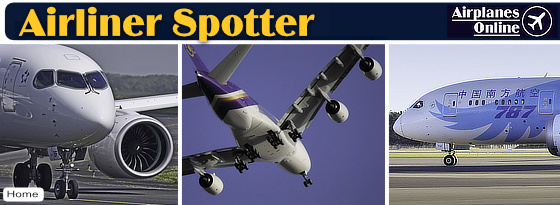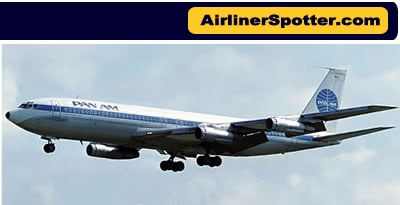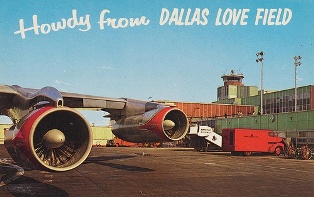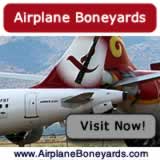|
How to Identify Early Jet Age Airliners
The jet age of passenger travel began in the late 1950s with the arrival of the Boeing 707, the Convair 880 and the Douglas DC-8.
Later aircraft included the Convair 990, Douglas DC-9 and McDonnell-Douglas DC-10 and MD-11, and Lockheed L-1011 Tristar.
We weren't able to spot and photograph airliners in those earlier times. But we have included on this page representative images of these earlier jet airliners from our collection of vintage postcards, and some of our original photographs from airplane boneyards.
Images of Out-of-Existence Airlines
The images on this page offer a great opportunity to look back on some of the airlines that existed before the mega-mergers of the airline industry today, like these:
- Pan American World Airways
- British Caledonian
- Northeast Airlines
- Northwest Orient Airlines
- National Airlines
- British Overseas Airways Corporation (BOAC)
- Trans World Airlines
- Western Airlines
- Ozark Airlines
- Republic Airlines
Where to Spot Out-of-Date Airliners: Airplane Boneyards
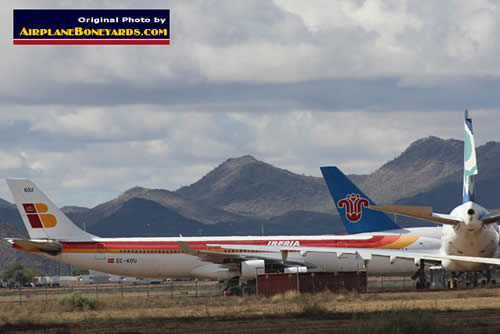 Airliners in storage at the Phoenix Goodyear Airport in the Arizona desert, including an Iberia A340
(Staff photo) Airliners in storage at the Phoenix Goodyear Airport in the Arizona desert, including an Iberia A340
(Staff photo) |
Commercial airliners all have limited lifespans. Ultimately, they must be retired from service, stored in "airplane boneyards" or graveyards, and finally dismantled and scrapped.
Jetliners eventually reach end-of-life due to airframe wear, obsolescence, or fuel inefficiency. Some jetliners are temporarily taken off flying status, and must be stored in a environment that is conducive to preservation. Others are kept for spare parts for flying aircraft.
To protect airliners from rust and corrosion during their storage, they are typically stored in dry, desert conditions. Engines and windows are covered with white, reflective materials to protect from wind and sun damage.
A sealed airliner can be stored safely for years, until the time comes to return it to active duty, or salvage. Eventually, all airliners are removed permanently from service and must be "disposed" of.
Airplane boneyards are a good place to spot airliners that you can't see anywhere else.
In the past year, we have spotted Boeing 707, DC-8, DC-10, MD-11 and a variety of Airbus aircraft in various boneyards in the western U.S., including:
- Mojave Airport in California
- Southern California Logistics Airport (SCLA) in Victorville, California
- Pinal Airpark near Tucson, Arizona
- Phoenix Goodyear Airport in Arizona
- Kingman Airport, Kingman Arizona
Also available is information on airliner boneyards in Europe, the UK, Australia, Russia and other locations around the world.
... and view photos of commercial airliner boneyards at www.AirplaneBoneyards.com
Images of the Boeing 707
Shown below is an image of a four-engine Boeing 707 of Continental Airlines More about the Boeing 707 history, production, photographs and spotting tips |
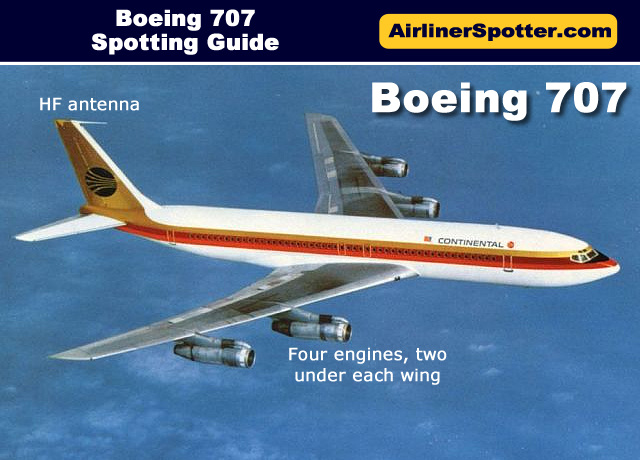 |
| Boeing 707 of British Caledonian |
| British Airtours Boeing 707 |
| Boeing 707 of British Overseas Airways Corporation (BOAC) |
| Trans World Airlines Boeing 707 in flight |
Lufthansa Boeing 707 More about the Boeing 707 history, production, photographs and spotting tips |
Images of the Douglas DC-8
| A 4-engine Douglas DC-8 of Delta Air Lines in flight |
| Delta Air Lines Douglas DC-8 in earlier livery |
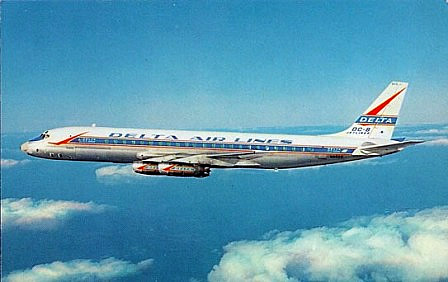 |
| National Air Lines Douglas DC-8 during landing |
| Douglas DC-8 Super 60 Series at Tampa International Airport (TPA) |
| Douglas DC-8 of Northwest Airlines |
Douglas DC-9
The DC-9 was designed by the Douglas Aircraft Company for frequent, short flights. It was first assembled in 1965 with its maiden flight later that year. Its T-tail design featured 2-engines mounted on the rear fuselage. Models included the original DC-9-10 and stretched models up to the DC-9-50.
The DC-9 evolved into the MD-80 and MD-90 Series of airliners built by McDonnell-Douglas, and later into the Boeing 717.
A total of 976 aircraft were built by the time production ended in October of 1982.
| Douglas DC-9 of Republic Airlines |
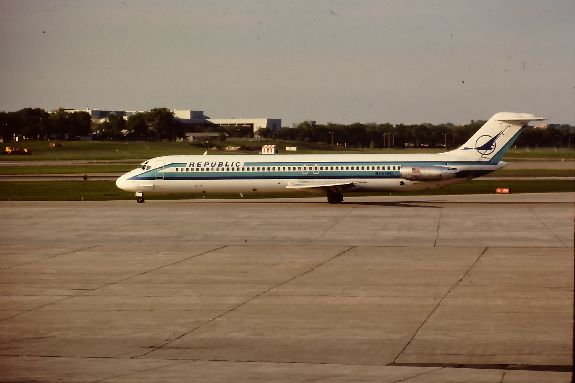 |
| Douglas DC-9 of Continental Airlines |
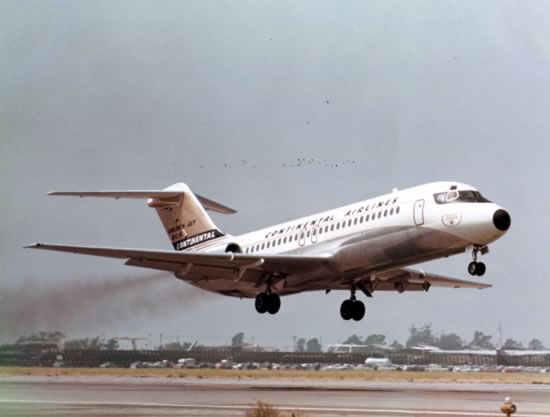 |
| Douglas DC-9 of Pacific Southwest Airlines (PSA) |
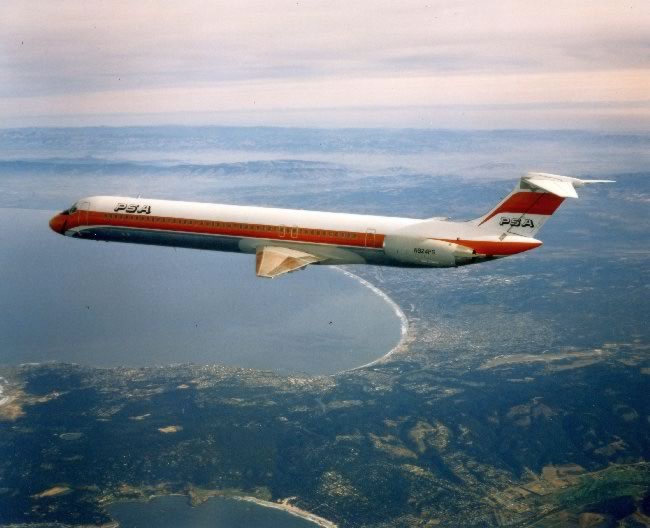 |
| Hughes Airwest Douglas DC-9 |
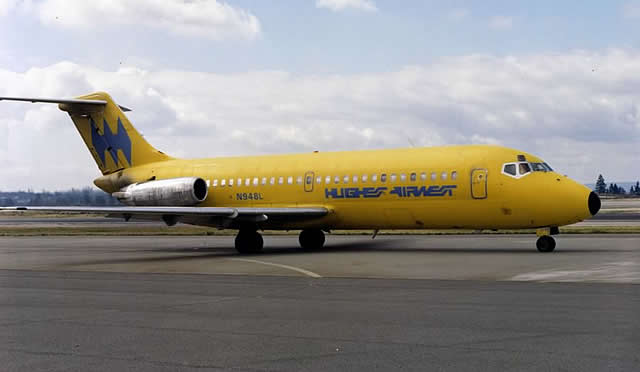 |
| TranStar Douglas DC-9 |
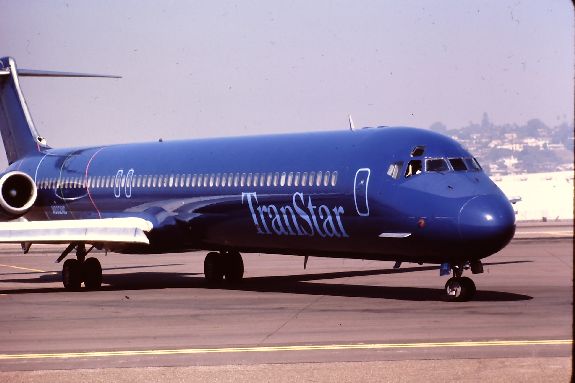 |
| Douglas DC-9 of Northeast Airlines |
McDonnell-Douglas DC-10
Western Air Lines Douglas DC-10 tri-jet airliner |
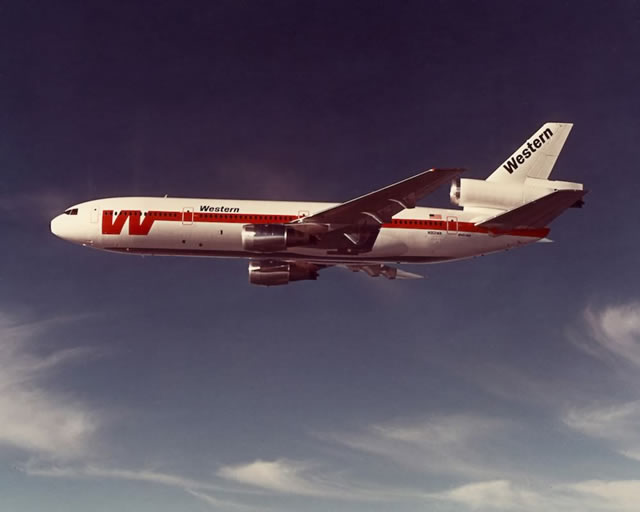 |
| Douglas DC-10 of Northwest Air Lines |
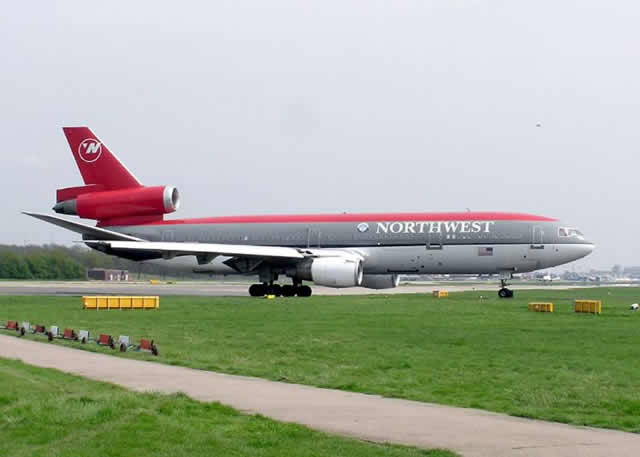 |
| Douglas DC-10 of Northwest Orient Airlines |
| Douglas DC-10 of National Airlines |
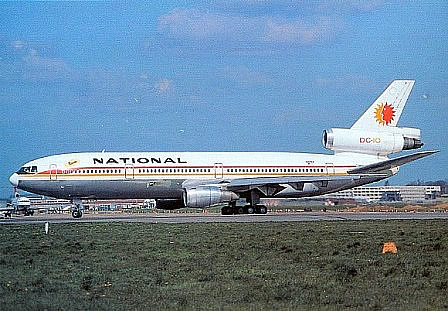 |
| Brazilian cargo VarigLog DC-10 airliners in storage at the Pinal Airpark in Arizona (Staff Photo) View similar photos at AirplaneBoneyards.com |
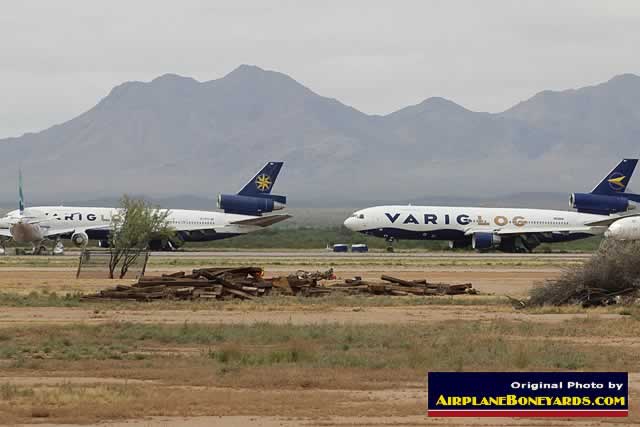 |
Images of the McDonnell-Douglas MD-11
Delta Air Lines McDonnell-Douglas MD-11 wide-body, tri-jet airliner More about the McDonnell-Douglas MD-11 history, production, photographs and spotting tips |
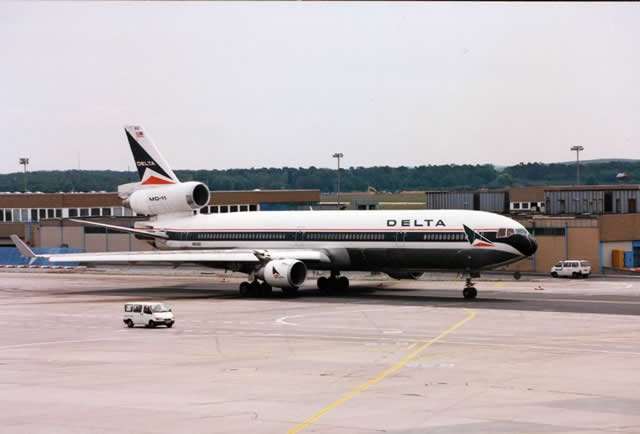 |
| FedEx MD-11F parked at the Southern California Logistics Airport in Victorville, California (Staff Photo) View similar photos at AirplaneBoneyards.com |
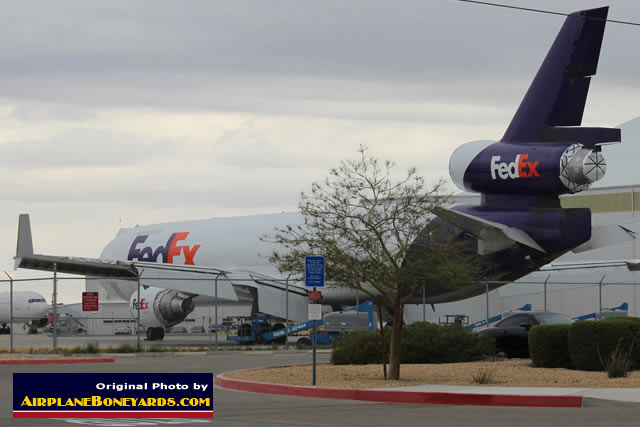 |
Lockheed L-1011 Tristar
The wide-body, tri-jet Lockheed L-1011 TriStar More about the Lockheed L-1011 history, production, photographs and spotting tips |
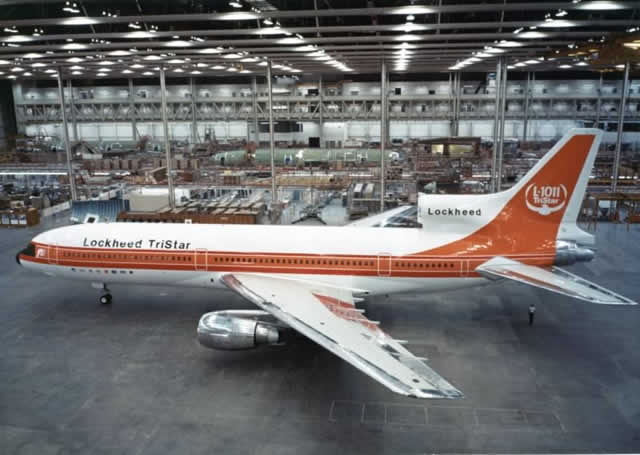 |
Images of the Convair 880
| Alaska Air Lines Convair 880 with four engines under the wings |
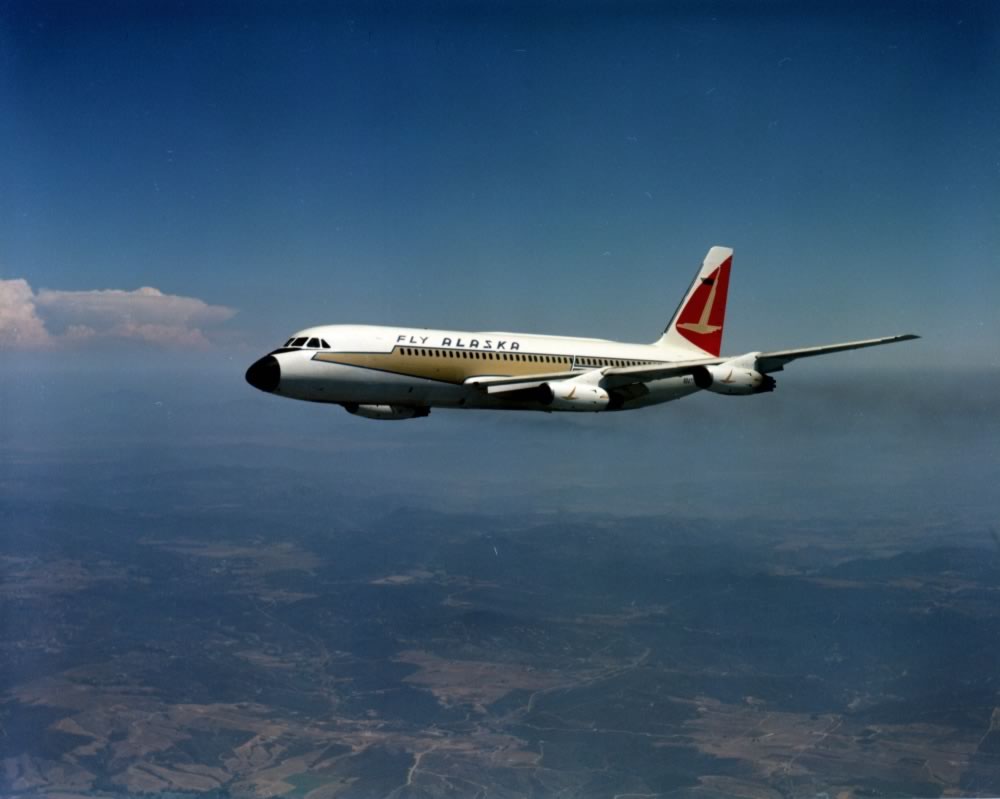 |
Images of the Convair 990
| The beautiful, sleek four-engine Convair 990 of Swiss Air |
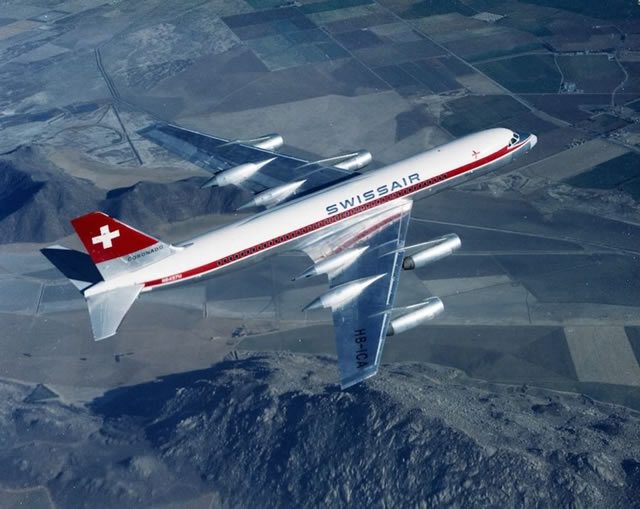 |
| American Airlines Convair 990 Astrojet |
| Convair 990 Jetliner gatekeeper on display at the entrance to the Mojave Airport in California It was NASA's N810NA Space Shuttle landing gear system test aircraft (Staff Photo) |
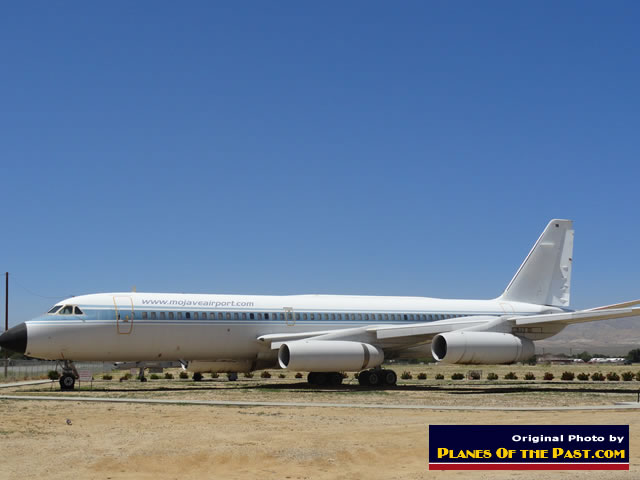 |
Caravelle
The Sud Aviation SE 210 Caravelle was the world's first short-to-medium-range jet airliner, produced by the French Sud Aviation company.
It was also the first jet airliner to be designed with the engines mounted on the rear of the fuselage. This design made for a quieter cabin.
The Caravelle was the first jet airliner manufactured in Europe outside of England. The aircraft was designed in response to a French government requirement for a medium-range airliner for Air France.
Its maiden flight occurred in 1955, and the aircraft entered service in 1959; a total of 282 Caravelles were built.
| Sud Aviation SE 210 Caravelle on display at the Pima Air and Space Museum in Tucson, Arizona |
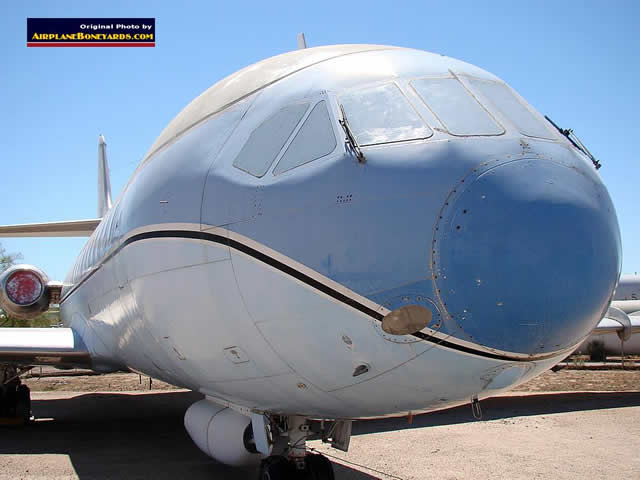 |
BAC-111
The British Aircraft Corporation One-Eleven, known as the BAC-111 was popular in the early days of jet travel; it had a similar appearance and twin-engine configuration to the DC-9. But the BAC-111 is long out-of-service; you won't spot one unless it is featured in an aviation museum.
| British Caledonian BAC-111 |
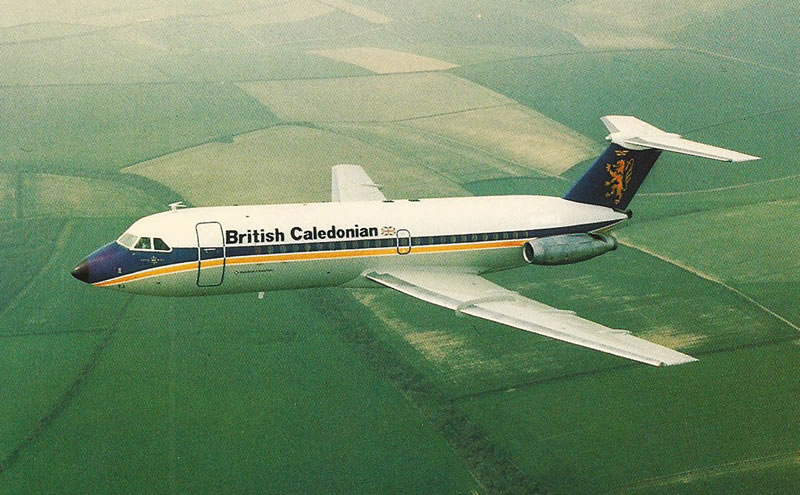 |
Hawker Siddeley Trident
|
The Hawker Siddeley HS 121 Trident (originally the de Havilland D.H.121 and the Airco DH 121) was a British short-medium range airliner. It was the first T-tail rear-engined three-engined jet airliner to be designed.
It was built during 1962-1978; a total of 117 Tridents were assembled and put into service. It could carry between 101-180 passengers.
Vickers VC10
The Vickers VC10 was a mid-sized, narrow-body long-range British jet airliner designed and built by Vickers-Armstrongs (Aircraft) Ltd. The VC10 was closely constrained by its BOAC specification which required operation from short airfields in Africa at high altitudes and temperatures (hot and high). This suited a number of African and Middle Eastern operators but restricted its appeal with other operators around the world.
The performance of the VC10 enabled it to achieve the sub-sonic record for a Trans-Atlantic crossing of just 5 hours 1 minute.
Its design featured four rear-mounted Rolls-Royce Conway jet engines, and a large T-tail.
Operators included BOAC, British United Airways (subsequently British Caledonian), East African Airways, Ghana Airways, Air Malawi and the Royal Air Force.
Although only 54 of the airliners were assembled, it provided air service from the 1960s to 1981.
| British Overseas Airways Corporation (BOAC) Vickers VC10 |
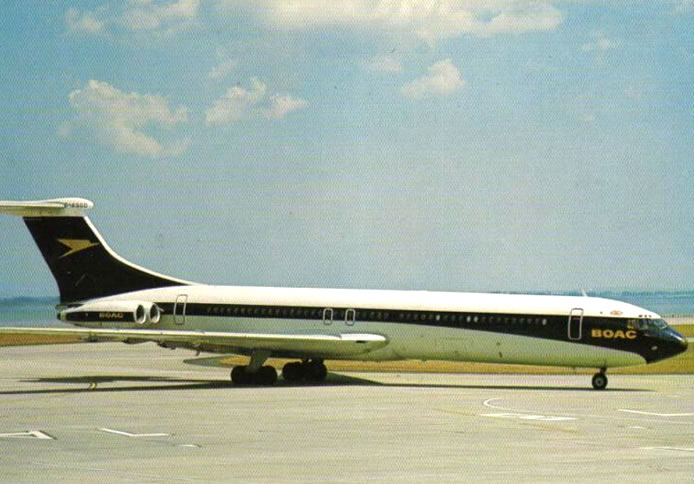 |
| A 4-engine Vickers VC10 of Gulf Air |
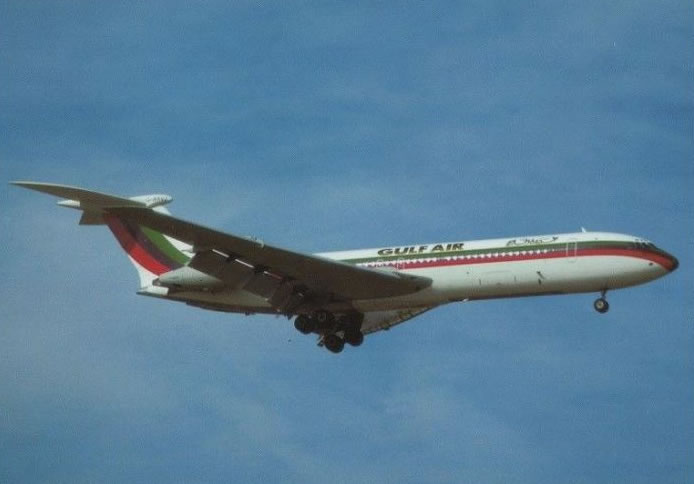 |
